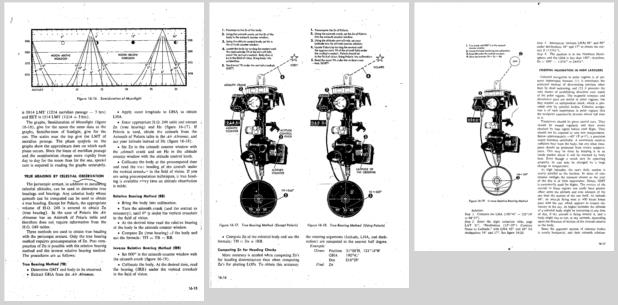
NavList:
A Community Devoted to the Preservation and Practice of Celestial Navigation and Other Methods of Traditional Wayfinding
From: Gary LaPook
Date: 2015 Jun 1, 14:11 -0700
Assuming that the british was similar to the U.S. mount the navigator had several ways to set it up so as to be able to check the aircraft's heading, see attached.
Since the azimuths can be accurately determined this should have alerted the navigator to his errors. With the mount set up, even though the precomputed altitudes might be off, the azimuths sould have been consistent since the heading of the plane wasn't changing. For example, if the first star he shot was at an azimuth 5 degrees greater than computed then the other two stars should have been the same 5 degrees greater, since this would have meant that the aircraft's heading was constanly five degrees off the planned. This guy missied a lot of warning signs.
See my prior posts:
https://NavList.net/m2.aspx/Kollsman-periscopic-sextant-mount-LaPook-oct-2010-g14221
The last photo shows the view through the eyepiece and the azimuth scale.
https://NavList.net/m2.aspx/Kollsman-periscopic-sextant-mount-LaPook-may-2011-g16401
gl







